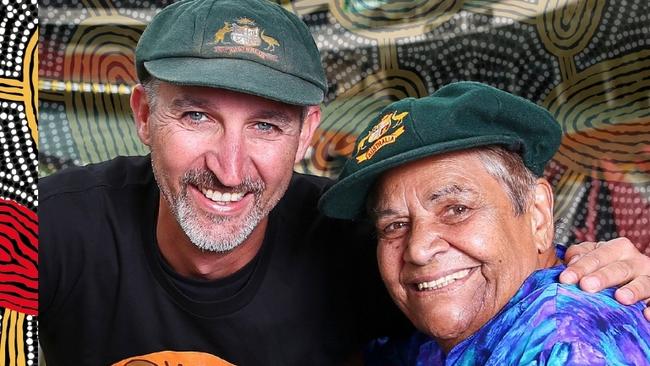Faith Thomas was the first indigenous owner of a Baggy Green
The first Aboriginal to play Test cricket was a South Australian nurse who turned her back on the sport to work as a midwife.

After winning gold in London, beach volleyballer Kerri Walsh-Jennings announced she had been five weeks pregnant, news that overshadowed the feat of having triumphed at three successive Olympics.
Soon after Serena Williams defeated her sister Venus to win her seventh Australian Open in 2017, she announced that a test taken while in Melbourne showed she had been two months’ pregnant. An astonished BBC asked in a headline: “How did she compete?”
And American runner Alysia Montano, a six-time winner, once competed in, but lost, the US national championship 800m sprint while five months’ pregnant.
None of this compares with the feat – one of so many – racked up by Adelaide’s Faith Thomas, who, aged 30, played her final competitive cricket match while four weeks off giving birth to her son.
A few years earlier, on February 28, 1958, Thomas strolled out on to the Junction Oval in Melbourne to play England in a Test match. Over four days, the bowler described as “right arm fast” hardly set the world on fire. Her modest statistics show she delivered 36 balls, from which 11 runs were scored. She took no wickets and managed three runs.
But she had just become the bearer of baggy green No.48 – the first Indigenous Australian to play Test cricket. Indeed, she was the first Aboriginal woman selected for the national team in any sport. It would be almost 39 years before another Indigenous Test cricketer (Jason Gillespie in 1999) and 61 years before another woman put on a baggy green (Ashleigh Gardner in 2019).
She joked of her debut: “I think I’m still the fastest woman bowler ever. And I think I also might have been the biggest flash in the pan ever.”
Thomas was born Faith Coulthard in the small community of Nepabunna in the Flinders Ranges, 600km north of Adelaide. Her mother was one of the Adnyamathanha people, her father German. It was the era of Bodyline, Don Bradman and Harold Larwood; cricket was no longer just sport, it was a subject of international tensions that seized the imaginations of Australians. Even the young boys at Colebrook Home near Quorn, where Thomas was sent to school, would throw rocks at galahs in trees as if they were English batsmen. Thomas joined in and reportedly had fine aim and natural ability, which quickly developed.
Quorn’s children – among the most deprived in the country – played a crude form of cricket on a dirt track with lumps of wood and often the stones that were plentiful and free. The boys grew to fear Thomas’s hazardous deliveries, which she fired off from just a few steps. The likes of Colebrook were cynically disparaged in 1997’s Bringing Them Home report, but it was not how Thomas remembered those years: “I ended up with three wonderful mums – Sister Hyde, Sister Anna and my natural mum … Had I not been in Colebrook, I would’ve never had the opportunities I did have. I consider myself not stolen but chosen.”
After school, the ambitious girl moved to the city to train in nursing at the Royal Adelaide Hospital and, after graduation, chose to study further to become a midwife – and the first Indigenous nurse employed by the South Australian government.
Another nurse mentioned that she regretted working one shift because she would miss cricket training. “Women play cricket?” Thomas asked. They did, and they were regularly a few players short of 11. By the weekend, Thomas was part of the team and playing her first match. The following week, she took a hat-trick with her high-octane deliveries — first from six steps but soon cut back to just four. No one had seen a woman with such bursting power from her forearm.
Her talent was quickly spotted and after a third game she was recruited to play for the state team and, in only her second season, was picked for Australia. Her international cricket career in no way reflected her performance over those four days; indeed, she was picked for the team to tour New Zealand and England. But Thomas chose midwifery over elite sport and worked for decades in outback communities across South Australia and the Northern Territory.
She was awarded an Order of Australia in 2019 and was inducted into the SA Cricket Association Wall of Fame, and the annual Faith Thomas Trophy also honours her.
A disproportionate number of South Australian women of a certain age are named Faith. They were not named after an inspiring sporting pioneer but for the first person they met: a loving, skilled and caring midwife.
Faith Thomas. Midwife and cricketer. Born Nepabunna, South Australia, 1933. Died April 15, aged 90.




To join the conversation, please log in. Don't have an account? Register
Join the conversation, you are commenting as Logout